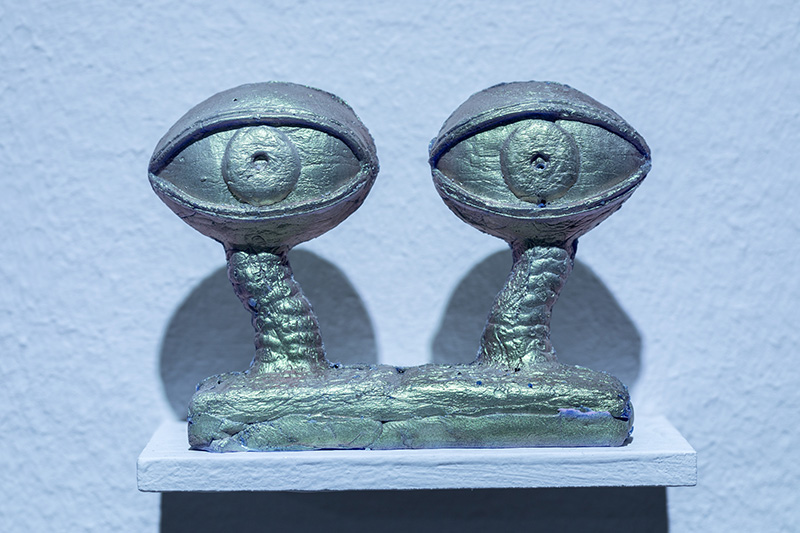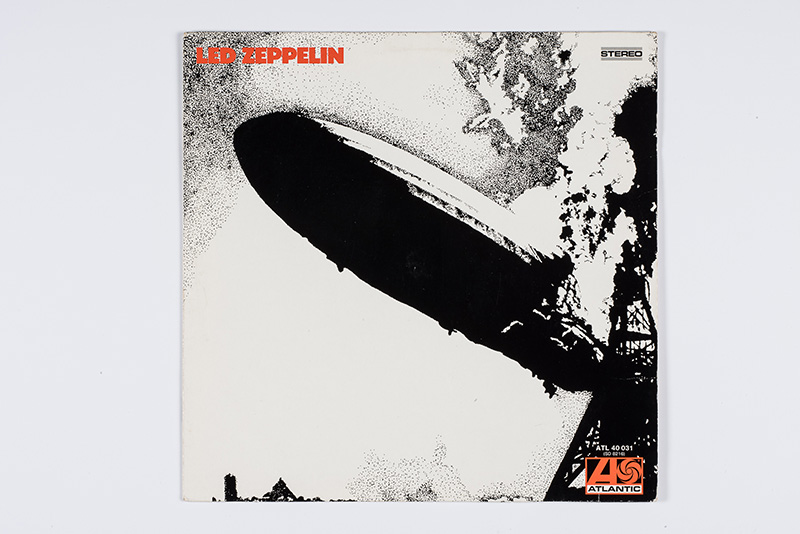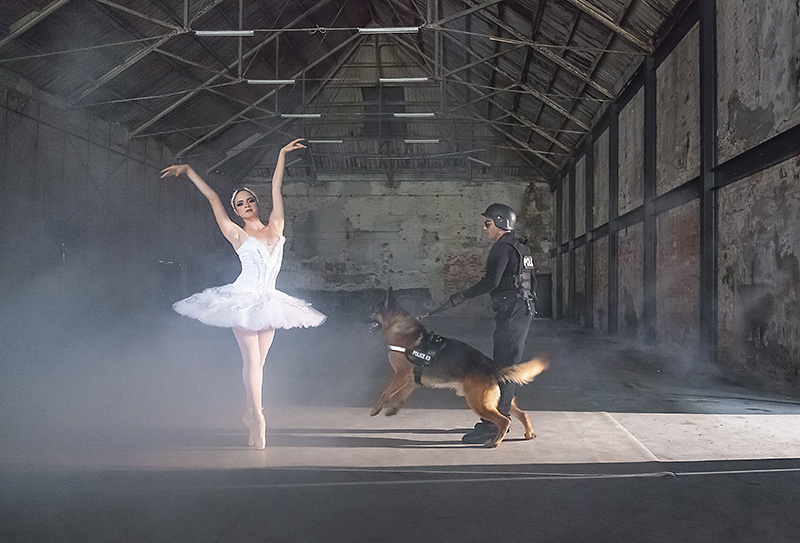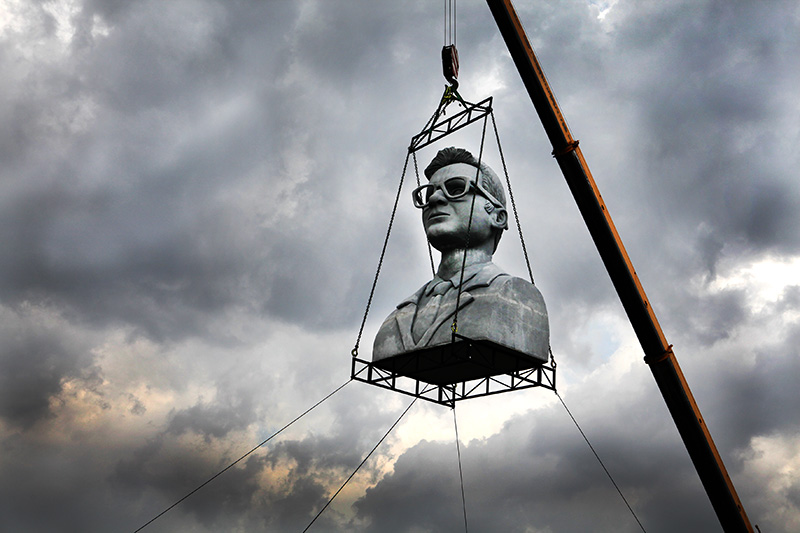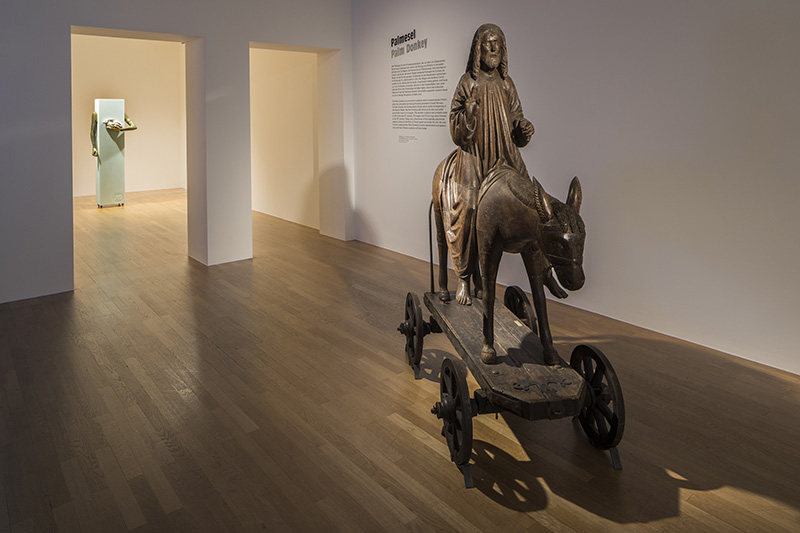ART-PRESENTATION: CULT! Legends, Stars, and Visual Icons-Part I
 One hundred years after the death of German hero Graf Ferdinand von Zeppelin and 80 years after the tragic misadventure of the LZ 129 Hindenburg at Lakehurst, the Zeppelin Museum is exploring the historical phenomenon of cults in society, politics, religion, and popular culture in its extensive summer exhibition “CULT! Legends, Stars, and Visual Icons” (Part II).
One hundred years after the death of German hero Graf Ferdinand von Zeppelin and 80 years after the tragic misadventure of the LZ 129 Hindenburg at Lakehurst, the Zeppelin Museum is exploring the historical phenomenon of cults in society, politics, religion, and popular culture in its extensive summer exhibition “CULT! Legends, Stars, and Visual Icons” (Part II).
By Efi Michalarou
Photo: Zeppelin Museum Archive
In a joint effort, the technology and the art department of the Zeppelin Museum have dedicated the exhibition “CULT! Legends, Stars, and Visual Icons” to the socio-cultural phenomenon of cults by examining aspects such as reverence, marketing, enthusiasm, the instrumentalization of technological developments, especially to those concerning the Zeppelin, and contemporary art works. In view of the history of the city of Friedrichshafen, the Museum is the ideal venue for an exploration of cults and their development in society, politics, religion, and popular culture. Most of the 1000 exhibits presented on 1700 m2 belong to the museum’s inventory. The art section includes works that were developed especially for this exhibition. The first part of the exhibition analyses the heroic, sacral, and ironic aspects of the airship’s presentation over the course of 100 years in an array of objects and media. From cocktail shakers to propaganda with Zeppelins in the bomb war, from children’s toys to condom advertisements, from imperial and patriotic marches to Led Zeppelin’s debut album, from stamps to Battlefield I: The Zeppelin is a cult – to this day. The second part of the show is dedicated to present-day cults seen through the eyes of contemporary artists. In their examinations of the Zeppelin legend (Kenneth Anger, Christoph Giradet, Aby Warburg), the artists lay emphasis on the mechanisms of cults in society, politics, and popular culture. Besides the cultification of stars and fans (Candice Breitz, Josh Kline), events and places (Julius von Bismarck), the rituals surrounding cults (Benedikt Hipp, Johannes Paul Raether, Jeremy Shaw) play a central role in these works. Many of the works on display show that cults can also develop subversive powers, which disrupt cultifications and oppose established conventions. The artists reflect on the rededication and reinterpretation of political cults (Halil Altindere, Yael Bartana, Aleksandra Domanović), and on the prevention of the emergence of cult sites (Dani Gal). The exhibition shows that the development of cults is a widespread and influential phenomenon on all levels of society. Cults generate a sense of community and stability in times of insecurity and global change, but also harbour the potential to enhance conformity, and hence, to deprive individuals of power. Participating artists: Halil Altindere, Kenneth Anger, Yael Bartana, Julius von Bismarck, Candice Breitz, Aleksandra Domanović, Dani Gal, Christoph Girardet, Benedikt Hipp, Josh Kline, Johannes Paul Raether, Jeremy Shaw andAby Warburg.
Info: Zeppelin Museum Friedrichshafen GmbH, Seestraße 22, Friedrichshafen, Duration: 2/6-15/10/17, Days & Hours: Daily 9:00-17:00, www.zeppelin-museum.de

